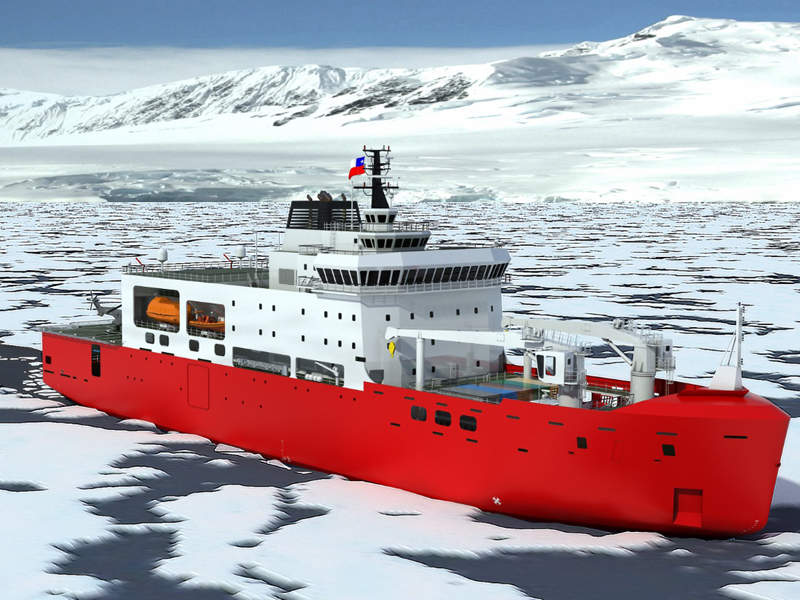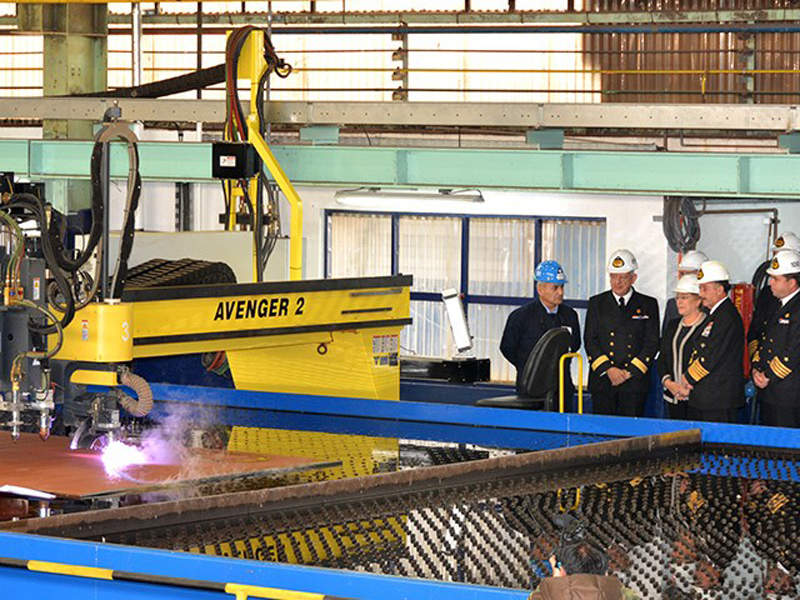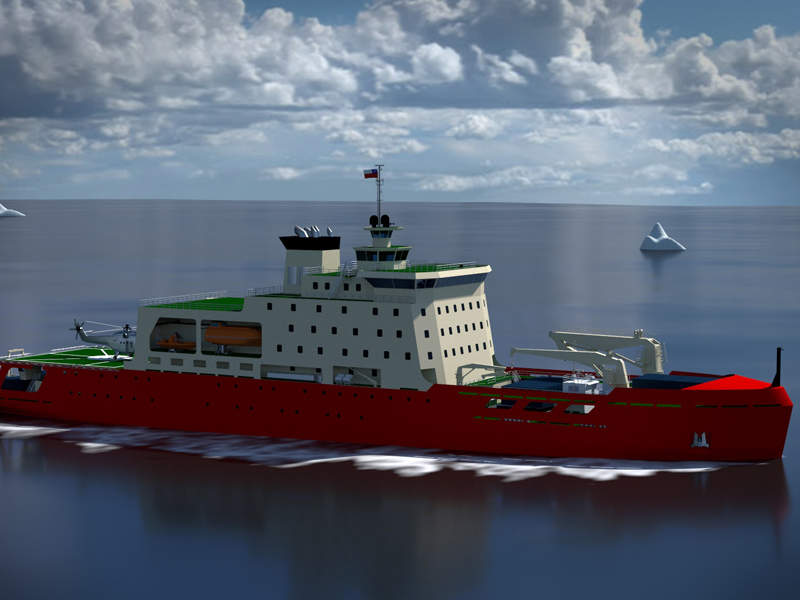The Chilean Navy has ordered an ice-breaking vessel to continue its operations in the Chilean Antarctic Territory.
The new icebreaker will replace the Chilean Navy’s ageing 6,500t Almirante Óscar Viel (AP-46) Antarctic supply vessel, which entered service in 1969, under a project named Antarctic I.
The vessel is intended to carry out missions such as search-and-rescue (SAR), troop transportation, medical support, scientific research and data gathering in the Antarctic zone for extended periods.
It will also be used to provide logistical support, including transportation of personnel, aviation fuel and oil to the country’s Antarctic bases.
Construction of Chilean Navy’s new icebreaker
Naval architecture and marine engineering firm Vard Marine received a contract worth €4m ($4.4m) from ASMAR Shipbuilding and Ship Repair Company to design the ice-breaking vessel in February 2016. The steel-cutting ceremony for the polar ship was held in May 2017.
Estimated to cost approximately $210m, the vessel is under construction at ASMAR Shipyards’ facility in Talcahuano, Chile.
The ship is anticipated to be delivered in 2021, with commissioning scheduled over the following two years.
Design and aviation facilities of Antarctic I
The Chilean Navy’s new icebreaker is based on the Vard 9 203 platform, which is designed to Lloyd’s Register PC 5 polar-class notation. It will have a length of 110m, width of 21m and draught of 7.2m. It can accommodate up to 120 personnel.
The icebreaker will have the capacity to transport 510m³ of containerised and vehicle cargo, 400m³ of pallet loads, and 400m³ of fuel. It will also incorporate microbiological, macrobiological and chemical laboratories, as well as instruments and sample collection equipment to support advanced scientific studies and research activities.
A stern flight deck will be fitted next to the hangar to support flight operations of a single medium-lift helicopter, such as Super Puma AS332L. The hangar amidships can house up to two medium-lift helicopters.
The icebreaker can carry rescue boats to conduct logistics supply and SAR missions at sea.
The polar-class ship will incorporate a sickbay with medical facilities for treating sick and injured personnel. Safety equipment will also be carried to protect the crew in low-temperature operations.
Deck machinery and equipment
The polar-class icebreaker will be outfitted with two 20t cargo cranes for cargo loading and unloading. A pair of davits with a 7.4m reach will be fitted to launch and recover landing craft.
Other deck machinery will include two 10t geophysical winches, a 4t towing winch, 5t Gilson winch, 4.6t conductivity, temperature and depth (CTD) winch, 6t CTD davit, and 3t T-davit.
The vessel features external equipment, such as echo sounders, sonars and a global positioning system (GPS), for use in SAR missions.
Propulsion and performance of Chilean Navy’s new ice-breaking vessel
GE Marine Solutions was selected by ASMAR to supply an integrated marine propulsion system for the new arctic vessel in March 2018.
The vessel will be powered by a diesel-electric propulsion system, comprising two GE International Maritime Organization (IMO) Tier 3-compliant diesel engines, a tunnel thruster, two propulsion shaft lines and propellers, and a vessel automation system.
The engines will reduce harmful emissions by 70% while avoiding the need for selective catalytic reduction (SCR) systems.
A SeaLyte dynamic positioning (DP) system will be fitted to provide superior vessel control and stability.
With an installed power of 14.5MW, the icebreaker can travel at speeds of 15k in water and 3k in 1m-thick ice. The range and endurance of the ship will be 14,000nmi and 60 days, respectively. The vessel will be capable of operating in extremely low temperatures up to -30°C.





